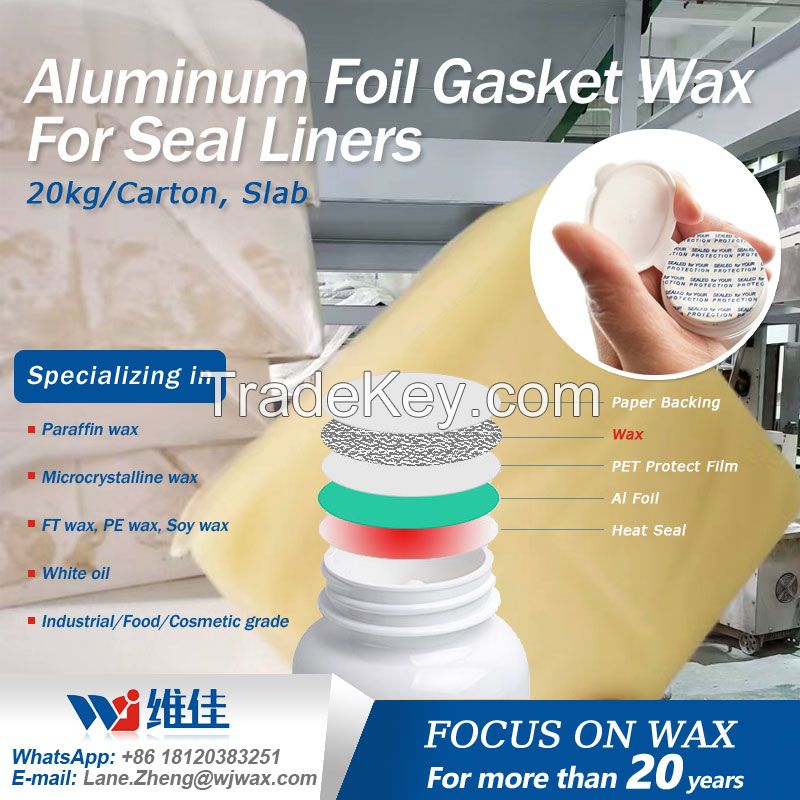Description
Purpose:
Aluminum foil gasket wax is a specialized product used in various
industries for sealing and protecting surfaces. It is composed of a
combination of waxes and additives, specifically formulated to
provide a strong adhesive bond between surfaces. The aluminum foil
layer adds an extra layer of protection and insulation.
They are widely used for bottle sealing in industries such as
medicine, health products, food, cosmetics, etc. The aluminum foil
gasket is composed of an aluminum foil composite layer, a wax
layer, and a cardboard paper layer. Aluminum Foil Gasket Wax is a
good gasket bonding material.
Performance:
This product is made of high-quality microcrystalline wax and
blended with modified additives. It has the characteristics of high
temperature resistance, easy operation, and no odor.
Packaging:
This product is in block form, packaged in cardboard boxes, with a
net weight of *0kg.
Storage:
Store in a ventilated and dry place below *0℃ .
Quality guarantee period:*6 months
Notes:
1. This product is suitable for use in finished aluminum foil
gaskets at an ambient temperature of ***5℃ .
2. The recommended operating temperature for the wax tray is **5
degrees.
3. The amount of wax applied per square meter should be controlled
between ****2g.
How does Induction Heat Seal work?
Induction heat sealing operates by utilizing a heat sealing machine
to seal liners. The process involves the emission of an
electromagnetic field through the induction coil of the
heat-sensing device, inducing eddy currents in the coil, which in
turn generate heat within the aluminum foil. The heat causes the
wax layer above the aluminum foil to melt, allowing it to be
absorbed by the pulp board backing. As the wax is absorbed, the
aluminum foil separates from the pulp board.
The conductive aluminum foil is heated through the eddy currents
induced by the coil. The heated foil melts the thin layer of wax,
which then gets absorbed into the pulp board. Once the wax is
absorbed, the foil detaches from the pulp board. Simultaneously,
the polymer on the underside of the foil, in contact with the
container, begins to melt. It flows down, solidifies, and adheres
to the bottle, forming a secure seal.
